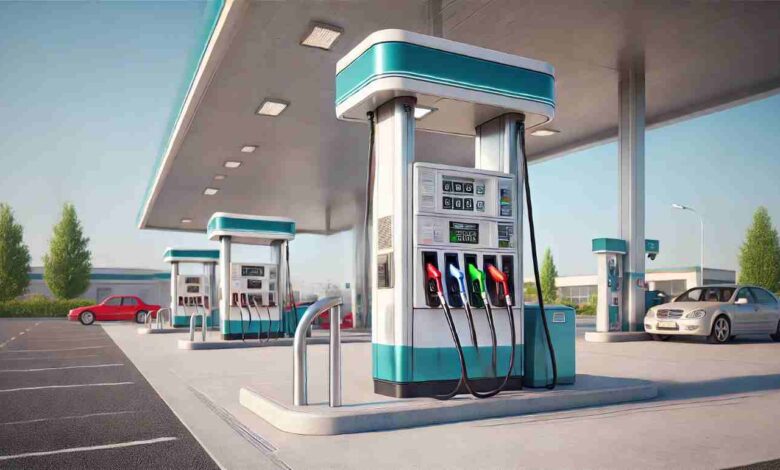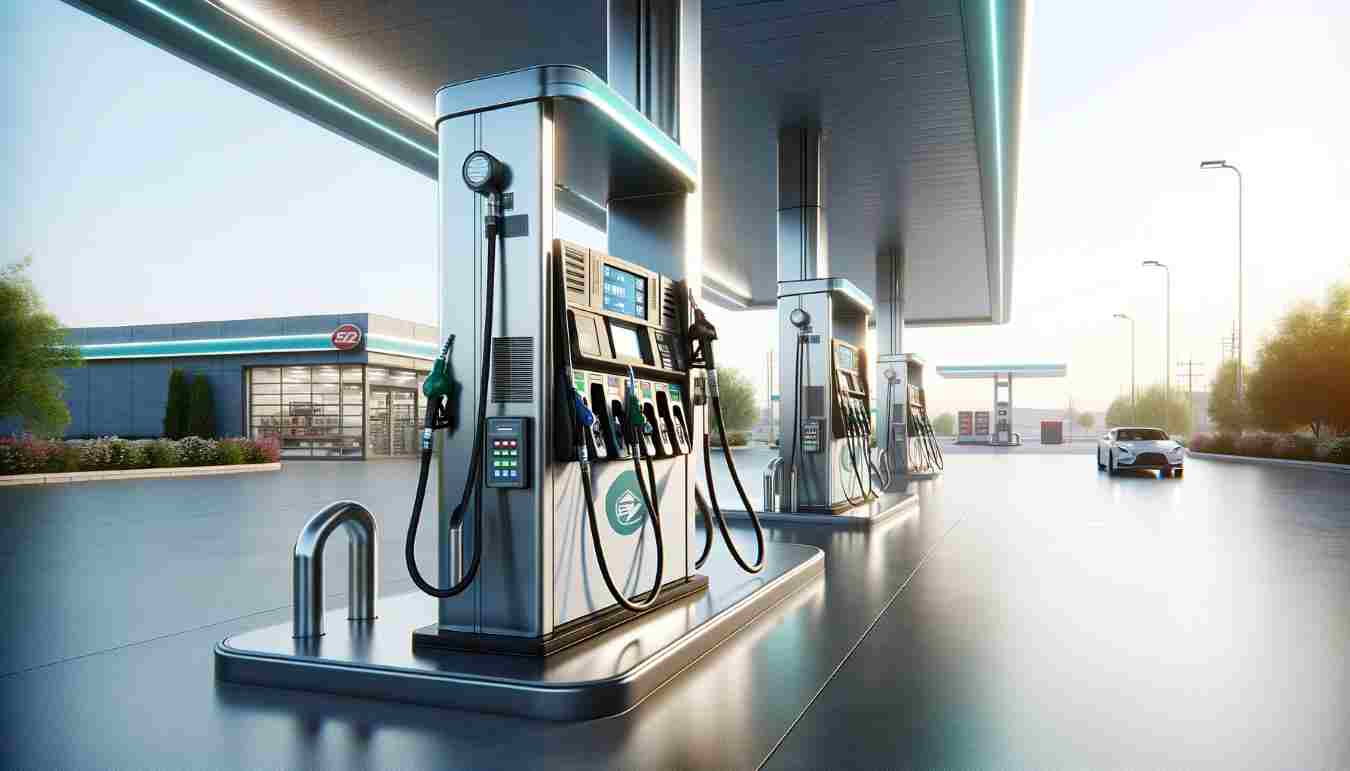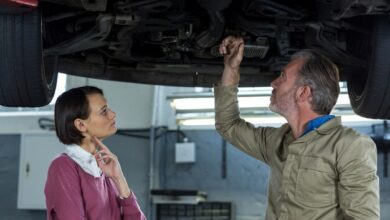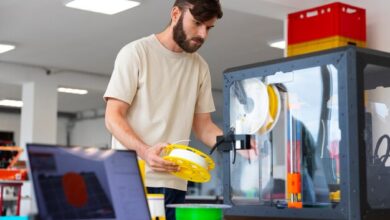What is a Gasoline Pump? And How Does it Work?

Gasoline pump, commonly known as fuel pumps, play a crucial role in delivering gasoline from storage tanks at service stations to vehicles, ensuring they have the fuel needed to operate. While this task seems simple, the technology behind it is sophisticated and vital for modern day transportation.
What is a Gasoline Pump?
A fuel dispenser is a machine at a filling station that is used to pump gasoline, gasoline, diesel, CNG, CGH2, HCNG, LPG, etc. Millions of motorists rely on gasoline pumps to purchase a variety of fuel types including petrol, diesel, and biofuels as part of their daily routine.
The Components of a Gasoline Pump
There are several crucial parts that make a gasoline pump perform smoothly, working in tandem. Some of these are the dispenser, metering system, nozzle, flow control system, and piping system.
Dispenser: The part of the pump where you can see monitors and buttons that let you choose both fuel type and payment. It also houses the hose and nozzle.
Metering System: It measures the quantity of fuel that is being dispensed to ensure the correct amount goes into the customer’s tank.
Nozzle: Mounted on a hose, it directs gasoline into the vehicle’s tank and has a trigger regulator for flow control.
Flow Control: A flow controller inside the dispenser regulates the fuel’s speed, preventing overflow or spillage.
Pipes and Piping: The pipes connect the underground storage tank to the dispenser, allowing gasoline to flow efficiently.
How Does a Gasoline Pump Work?
Customers using a gas pump will select their fuel type and press the handle to activate it (gas pumps function through either suction or submersible systems).
1. Suction & Submersible Pumps
Suction pumps use a motor to create a vacuum, drawing gasoline up from an underground tank. These are now typically used when the storage tank is below ground. Submersible pumps, however, are installed inside the fuel tank and push gasoline upwards, which is more efficient for longer distances.
2. Fuel Flow and Measurement
The pump pulls fuel from an underground tank through pipes and passes it through a flow meter to measure fuel accurately. Modern meters use electronic systems to ensure precise readings displayed on the pump’s screen. Once measured, fuel flows into the hose and nozzle, where the customer controls the amount they want in their vehicle.
3. Automatic Shut-off Mechanism
An interesting thing in gasoline pumps is the automatic shut-off mechanism that does not let the tank overflow. We must do this to avoid overflow, which could be a safety concern. Within the nozzle is a Venturi tube, a tube that produces suction. As the vacuum pressure changes when the fuel tank is full, reappearing at a predetermined level that tells the pump to shut off automatically and prevents spillage.
Different Types of Gasoline Pumps
There are two main types of fuel pumps: mechanical and electric.
1. Mechanical Pumps
Ruined by them all are their is most likely the circuitous devices usually known from older vehicles with carbureted engines. They function on a diaphragm and lever system that is actuated by the engine camshaft. As the engine rotates, so does the camshaft, and a lever connected to that assembly starts to move, creating vacuum and fuel on its way into the pump chamber. From there, the fuel travels into the carburetor to be mixed with air and then burned in the engine.
2. Electric Pumps
This electric fuel pump, however which would be located within the fuel tank of a modern vehicle is an entirely different matter. Electric pumps force gasoline via fuel lines to the engine. Electric pumps are also very efficient in doing this and can generate the 40-60 psi or so of pressure that is needed for modern fuel injection systems. Indeed, most cars also come with a fuel pressure monitoring system that helps regulate the flow of fuel across an array of driving conditions.

How Gasoline Pumps Ensure Safety
Due to its flammable nature, gasoline is inherently dangerous to work with. This is one reason they will build redundancy into gasoline pumps. For instance:
- The check valves prevent fuel from returning to the tank once pumping is over–this maintains pressure in the pipes.
- Overfilling and spillage are avoided via automatic shut-off nozzles.
- State-of-the-art pumps also have leak-detection systems for underground pipes, notifying operators of a problem.
I will tell you one more secret, and this is that gasoline pumps are REGULARLY CALIBRATED BY LOCAL AUTHORITIES to PROVIDE ACCURATE measures of fuel. This is important, especially for gasoline, since temperature changes can affect the amount you buy.
Importance of Maintenance and Calibration
Regular maintenance and calibration are critical to the safe and efficient operation of gasoline pumps. Over time, the flow meter components of the pump may become worn and develop leaks in the input circuits. This causes inaccuracies in how much fuel is being dispensed. The operating practices that can maintain rating compliance are, in fact, why government agencies regularly check the calibration and rate of flow of pumps. Mistakes are corrected and some pumps may be fined or closed until the errors are corrected.
Environmental and Economic Impact
Gasoline pumps are also causing environmental issues primarily related to vapor emissions. On one hand, they reduce the emission of harmful hydrocarbons, but on the other, they allow fuel evaporation into the environment, contributing to pollution and climate change. Many gasoline pumps now include vapor recovery systems that collect these emissions, helping to mitigate their environmental impact.
Additionally, gasoline pumps are crucial to the global fuel economy. Gasoline prices and distribution scales are directly influenced by the efficiency of these pumps. High-traffic stations can dispense tens of thousands of gallons per day with minimal disruption, positioning them at the heart of the transportation and logistics industries.
The Future of Gasoline Pumps
The future, or perhaps soon to be former, bane of electric vehicles (EVs), gasoline pumps could be in for a major transformation. Gas pumps are still common, but EV chargers are appearing more often at regular gas stations. One model suggests the infrastructure for refueling will eventually support both gasoline and electric vehicles.
The Bottom Line
Modern transportation heavily relies on gasoline pumps, which provide comfort, convenience, and operational efficiency with a range of specialized safety and accuracy features. As technology advances, these pumps will improve and may eventually coexist with EV charging stations.





